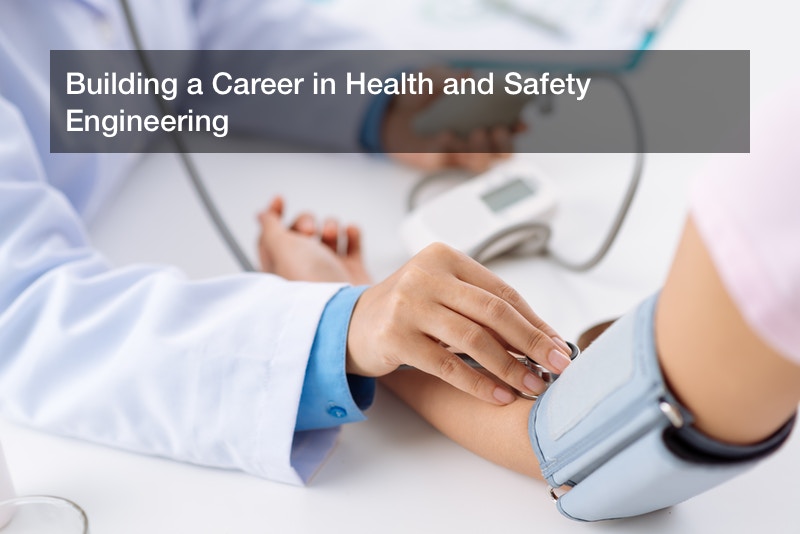Building a Career in Health and Safety Engineering


Fire suppression systems are essential safety components of building protection. These systems ensure quick response to building fires, containing a fire before it spreads and causes extensive damage to the property or injures anyone inside. Sprinklers reduce the amount of water used to fight a fire by up to 90%.
Choosing a Fire Sprinkler System Designer
Choosing the right fire sprinkler system is critical whether it’s for commercial or residential application. However, it’s also more important to find the right fire sprinkler designer who’ll guide you through the buying process.
The Functions of a Fire Sprinkler System Designer
Health and Safety Engineers come up with safety designs and procedures to keep people safe and ensure the property is not damaged. These experts develop appropriate hazard control methods using the principles of systems engineering and of health and safety. More importantly, they conduct accurate simulations, quality checks, system tests, and monitor efficiency to ensure a functional and reliable fire sprinkler system design.
The Duties of Health and Safety Engineers Include
- Reviewing plans, designs, specifications and development of new equipment
- Inspecting machinery and building to check for any possible hazards.
- Asses the efficiency of different process control mechanisms.
- Building inspection and evaluation of health and safety measures in place.
- Conduct fire protection sprinkler system installation among other safety devices.
- Develop, review and managing safety and health programs
- Investigate occupational diseases and injuries and recommend measures to avoid future industrial accidents.
- Recommend on best industrial practices towards waste and noise pollution reduction strategies.
Types of Health and Safety Engineers
There are four main categories of health and safety engineers for various industrial applications.
- Fire Sprinkler System Designers These engineers designers design fire protection systems and safety plans for both commercial and residential buildings. They are highly involved during the design stage of building construction.
- System Safety Engineers are widely used in many disciplines, including automation and aerospace. However, their specialties extend further to other fields such as medical and software reliability and safety.
- Aviation Safety Engineer focus on more complex systems like satellites, spacecraft and rockets to ensure they operate as designed.
- Product safety engineers investigate occupational hazards, accidents and injuries. They recommend safety solutions to product associated risks.
Essentials to Becoming a Certified Fire Sprinkler System Designer
Having a bachelor’s degree in engineering fields is necessary for anyone looking to be a health and safety engineer. The four core engineering disciplines they major on are chemical, civil, electrical and mechanical. Due to interdisciplinary principles, health and safety engineers often work in related fields.
Health and safety engineering programs combine classroom sessions, that focus on mathematics, science and social sciences, with laboratory and computer classes as well as field works. They also go through designs projects and general engineering.
Students aspiring to become health and safety engineers need to put more effort into subjects like calculus and algebra, sciences and trigonometry. Generally, it takes about 4 years to complete a bachelor’s degree in health and safety and there are plenty of industrial attachments options for your practical experience.
Depending on the university you attend, some universities allow their students to gather practical skills while they study to prepare them for the job market. Another option you can consider is a 5-year accelerated program offered by few universities. It allows you to go through a crash program that awards both bachelor’s and a master’s degree in health and safety engineering. With a master’s degree, you have several higher-level job options available.
Qualities of a Good Fire Sprinkler System Designer
As a health and safety engineer, there are key attributes accompanied by this profession.
- Creativity is key to health and safety engineering. Finding solutions to unique problems need a creative mind than can critically think to identify and manage potential hazards. A good engineer also has remarkable observational skills. They need to understand how systems function and manage risks. Reading and problem-solving skills will also go along way to improve the efficiency of health and safety measures put in place.
Lastly, health and safety engineers are encouraged to continuously improving their knowledge with modern and new technologies to deal with modern challenges. Stay ahead of the pack in your workplace for even more opportunities.
